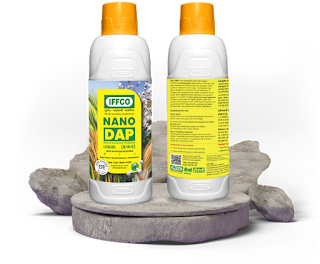How to Embrace Sustainable Agriculture With IFFCO Urea Fertilizer?
Sustainable agriculture aims to meet current and future societal needs for food while protecting the environment. As one of the world's largest producers of fertilizers, IFFCO BAZAR plays a key role through its urea fertilizer. By understanding and properly applying urea fertilizer, farmers can sustainably boost yields and nutrition.
Proper Application Rates and Timing
Determining the optimal application rate and timing for urea fertilizer is crucial to promoting healthy plant growth while avoiding waste through over-fertilization. First, consult regional crop guidelines and perform soil testing to accurately gauge nutrient needs specific to your soil and cropping system. With this data, calculate fertilizer rates that will supplement existing soil nitrogen levels to reach sufficiency without providing excess. Time the initial application just before or at planting to support early crop development. Then, consider side-dressing with additional urea once rapid vegetative growth is underway, providing a nitrogen boost when demand peaks.
Following precise crop-specific guidelines for cut-off timings helps prevent late-season luxury consumption. Careful attention to application rate and timing details ensures the urea has the intended beneficial impacts without contributing to field nutrient imbalance or groundwater contamination over time.
Incorporating Into Soil
While urea fertilizer provides a readily plant-available nitrogen source, leaving granules sitting on the soil surface can lead to substantial nitrogen loss via volatilization and runoff. As soon as possible after spreading urea, incorporate the granules into the soil root zone, either via irrigation or mechanical tillage. Mixing suspends urea in soil water, allowing the fertilizer to interact with soil particles. This retains and protects the nitrogen while facilitating controlled release over the growing season as the urea hydrolyzes.
However, excessive rainfall, leaching, and erosion can still lead to nitrogen movement through the profile. The ideal incorporation method minimises field passes while strategically placing urea in crop rooting zones to make the nitrogen accessible to plants while mitigating environmental losses.
Supporting Healthy Soil
While fertilizers like urea can provide a crop boost in the short term, maintaining plant-available nutrients in soil over the long haul requires balancing inorganic and organic inputs to drive soil health. Beyond directly supplementing fields with urea, growers should also devote efforts to nurturing the living soil ecosystem and building soil organic matter (SOM) stocks to support robust nutrient cycling and retention. Practices like crop rotations, cover cropping, conservation tillage, and compost amendments can feed diverse and active soil biology while reducing losses from the root zone habitat they create.
When growers amplify the inherent nutrient-supplying power and resilience of their soil resource in tandem with precision urea fertilization, crops thrive while ecosystems remain protected. This combined approach increases productivity for the current generation while ensuring soil function and farm viability for those to come.
Evaluating Progress
Keep detailed records on fertilizer application rates, timing, crop yields, nutrient levels through testing, and any signs of distress. This allows for evaluating if the current program provides adequate nutrition without over-fertilizing. Work with agronomists and other growers to continually reassess practices. Make small adjustments to improve productivity and environmental stewardship over time.
With proper management, IFFCO urea fertilizer can boost yields while minimizing environmental impact, allowing farmers to embrace sustainable agriculture. Work within regional guidelines while exploring enhanced efficiency products, incorporating urea into soils, supporting healthy soil ecosystems, and continually evaluating progress. This balances productivity and stewardship.



Comments
Post a Comment